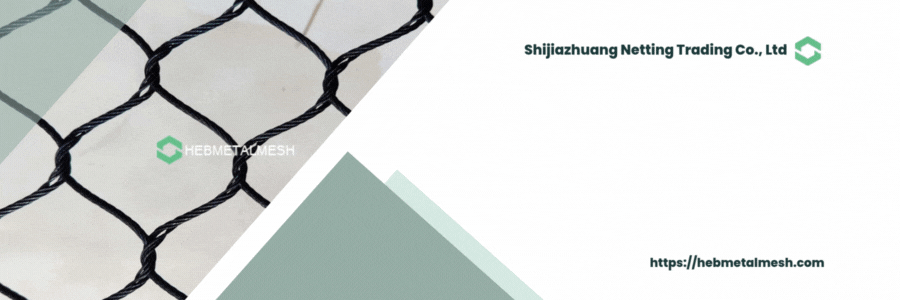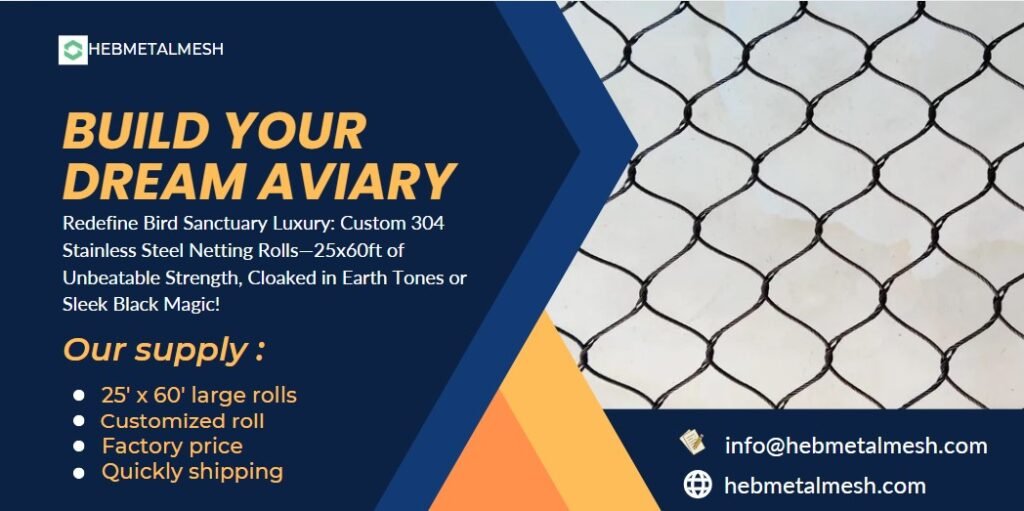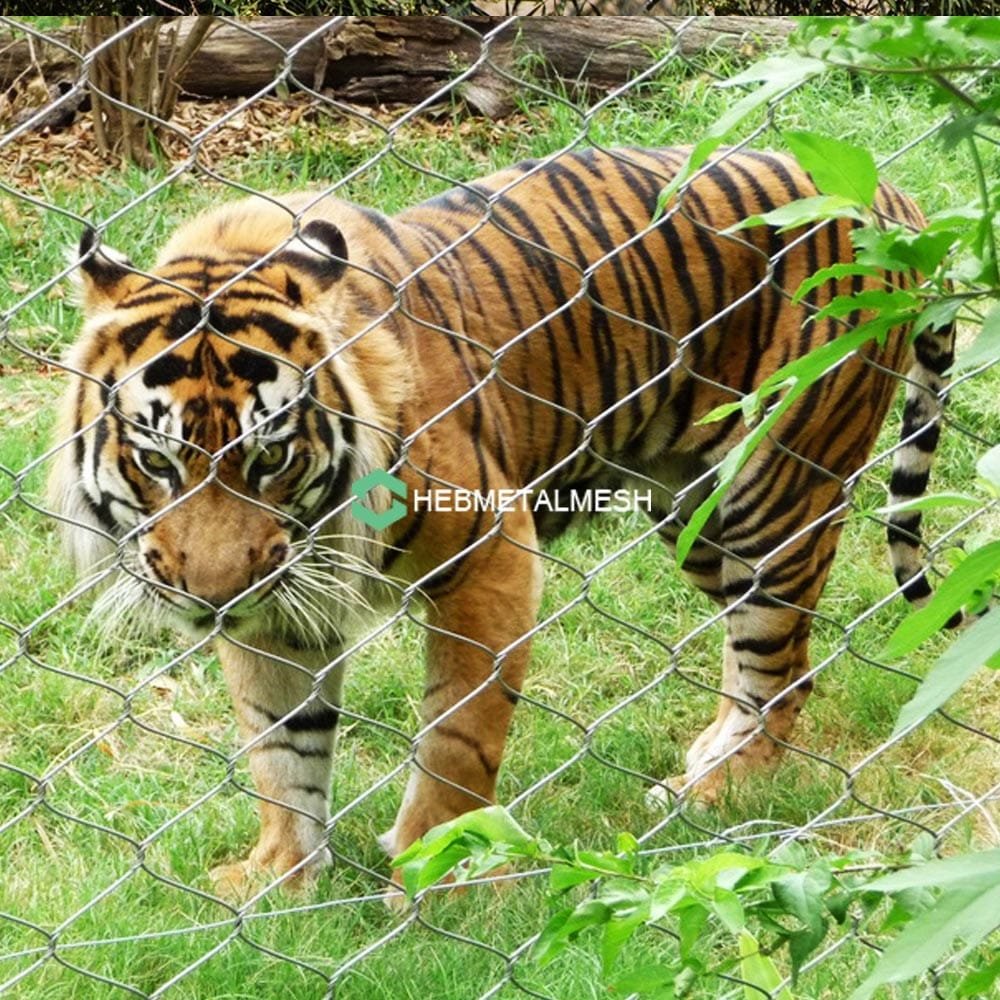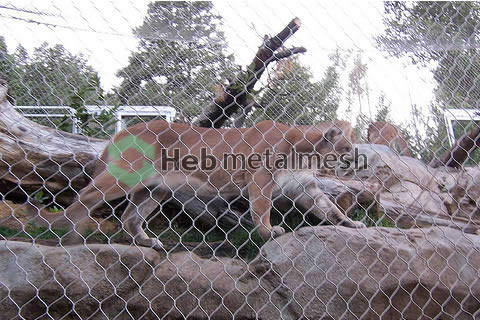Introduction to Zoo Mesh for Aviaries
Zoo mesh for aviaries serves as a critical component in creating safe and secure environments for various species of birds. As aviculture gains popularity, the need for effective, durable, and cost-effective solutions becomes increasingly important. Aviaries need to provide ample protection against potential predators while simultaneously ensuring comfort and ample space for the birds to thrive. This is where zoo mesh emerges as an essential material.
The design and construction of aviaries require careful consideration, particularly in terms of safety and durability. Cost-effective zoo mesh solutions offer a reliable option for bird enclosures, preventing escape and safeguarding birds from external threats. By implementing high-quality materials like stainless steel, aviaries can ensure a long-lasting and robust structure that withstands adverse weather conditions and the test of time.
In aviculture, the application of zoo mesh extends beyond simple enclosure. It plays a pivotal role in facilitating airflow and natural light, essential for maintaining the health of birds housed within. The use of cost-effective mesh also allows for enhanced visibility, creating an aesthetically pleasing environment that displays birds in a manner that captivates observers while keeping them secure.
Additionally, the versatility of zoo mesh means it can be customized to fit various aviary sizes and designs, accommodating diverse bird species, from smaller finches to larger parrots. The choice of zoo mesh reflects a focus on both functionality and welfare, allowing bird enthusiasts to create habitat conditions that mirror the birds’ natural environment. The integration of high-quality materials ensures that aviaries not only meet safety standards but also promote the overall well-being of their avian inhabitants.
Why Choose Stainless Steel Zoo Mesh?
When it comes to constructing aviaries, selecting the appropriate material for enclosure is crucial to ensuring the health and safety of the birds housed within. One of the best options available on the market is stainless steel zoo mesh. Its combination of durability, corrosion resistance, and safety features outperforms alternatives like plastic or regular steel, making it a smart investment for any aviary project.
Stainless steel zoo mesh is renowned for its remarkable durability. Unlike plastic materials, which can degrade over time due to exposure to harsh weather conditions or bird activities, stainless steel maintains its structural integrity much longer. This means less frequent replacements and repairs, translating to significant long-term savings. Additionally, stainless steel mesh can withstand the wear and tear caused by even the most energetic birds, ensuring that aviaries remain secure and safe.
Another significant advantage of stainless steel is its resistance to corrosion. Aviaries are often exposed to moisture, which can lead to rust and deterioration in materials that are not specifically treated to withstand such conditions. In contrast, stainless steel corrosion resistance, particularly that of Stainless Steel 304, makes it an ideal choice for those looking to ensure longevity and maintain a safe environment for the birds. The investment in this material pays off through its enhanced lifespan and reduced maintenance needs.
Moreover, safety is a paramount concern in aviaries. Stainless steel zoo mesh provides a secure barrier against predators while allowing for maximum airflow, visibility, and light penetration. This balance not only keeps birds safe but also promotes their natural behaviors within the aviary. With its blend of practical attributes and performance, Stainless Steel 304 consistently emerges as the preferred choice for those looking for a cost-effective zoo mesh solution in their aviary design.
Understanding Cost-Effective Options
Cost-effective zoo mesh for aviaries is a term that encapsulates a variety of factors influencing both initial expenditure and long-term usability. When discussing the affordability of zoo mesh, it is critical to consider not only the purchase price but also the durability and maintenance implications that accompany the product. A mesh’s longevity significantly impacts its overall value. High-quality materials that withstand environmental factors typically result in reduced replacement frequency, thereby lowering the cost per year over its lifespan.
Moreover, maintenance costs represent another vital aspect to consider. Some materials may present a lower upfront cost but might require frequent repairs or replacement, thus increasing overall expenses. Conversely, investing in a more robust and durable cost-effective zoo mesh for aviaries may mean a higher initial outlay but can ultimately yield significant savings through reduced upkeep and increased longevity.
It is also worth noting that various materials exhibit distinctive characteristics that could affect their long-term performance. For instance, stainless steel meshes tend to have a higher upfront cost but are renowned for their longevity and low maintenance needs, making them a smart long-term investment. On the other hand, plastic or synthetic alternatives may appeal due to their lower initial investment; however, they may require more frequent replacement due to wear and tear. Assessing these factors helps in balancing the initial investment with the expected functionality over time.
Ultimately, understanding what constitutes a cost-effective choice in zoo mesh involves evaluating the price against performance metrics such as durability and maintenance requirements. This comprehensive approach leads to a more informed decision, ensuring that aviary owners can achieve a balance between budget considerations and product efficacy.
Color Choices for Your Aviary: Nature or Black Oxide
When it comes to the design and construction of aviaries, the selection of the appropriate color for the zoo mesh can significantly influence both the aesthetic appeal and functional performance of the structure. The two predominant color options are natural and black oxide finishes, each offering distinct benefits that cater to different environmental contexts and design preferences.
The natural finish replicates the hues found in nature, allowing the aviary to blend seamlessly into its surroundings. This color choice helps minimize visual disruption for both the birds and observing guests, creating a more immersive experience. Aviaries adorned with natural-colored zoo mesh have the advantage of providing a harmonious visual environment that promotes a sense of tranquility and comfort for the birds within. Additionally, the camouflage effect of the natural color can deter potential predators, ensuring that the avian inhabitants remain safe and secure.
On the other hand, black oxide mesh serves as a striking option that highlights the aviary’s structure while also providing functional benefits. This color choice allows for greater visibility of the birds against a darker backdrop, enhancing the overall viewing experience. Furthermore, the black oxide finish tends to provide higher durability and resistance against the elements, which can be particularly beneficial in various weather conditions. The deeper hue can also absorb heat, creating a slightly warmer environment that may benefit certain species of birds that thrive in warmer climates.
Ultimately, the choice between natural and black oxide finishes hinges upon the specific aesthetic goals and practical needs of the aviary. By carefully considering the visual impact and functionality of each color, one can select a cost-effective zoo mesh for aviaries that not only meets the structural demands but also enriches the surrounding environment.
Handwoven Stainless Steel Zoo Mesh: A Top Recommendation

When it comes to creating a safe and engaging environment for birds in aviaries, handwoven stainless steel zoo mesh stands out as the top recommendation. This specialized mesh is expertly crafted by skilled artisans, ensuring that each piece is of the highest quality. Unlike mass-produced alternatives, handwoven stainless steel zoo mesh offers superior durability and adaptability, making it ideal for various aviary designs.
One of the unique features of handwoven stainless steel zoo mesh is its resilience against environmental factors. The stainless steel material provides excellent resistance to corrosion and rust, which is particularly beneficial in outdoor settings where exposure to moisture and varying temperatures can compromise other types of mesh. This characteristic guarantees that aviaries remain secure for a longer period, minimizing the need for frequent replacements and repairs, thus making it a truly cost-effective solution in the long run.
Moreover, the craftsmanship involved in producing this mesh ensures a consistent weave, allowing for optimal visibility while maintaining strength. This allows birds to be closely observed without compromising their safety. Testimonials from aviary owners demonstrate the effectiveness of handwoven stainless steel zoo mesh. For instance, an aviary dedicated to rehabilitation of exotic birds reported a significant decrease in escape attempts after upgrading to this mesh product, highlighting its effectiveness in providing a secure environment.
Furthermore, organizations specializing in wildlife conservation have acclaimed the use of handwoven stainless steel zoo mesh as essential in their aviary projects, emphasizing its role in promoting animal welfare. The combination of durability, safety, and performance makes handwoven stainless steel zoo mesh an outstanding choice for any aviary, ensuring that it remains both functional and aesthetically pleasing for years to come.
Common Questions About Cost-Effective Zoo Mesh
When contemplating the installation of cost-effective zoo mesh for aviaries, many prospective buyers have a range of questions regarding various aspects of the product. Understanding these common inquiries can greatly assist in making an informed purchasing decision.
Cost-effective zoo mesh combines durability, longevity, and low maintenance, reducing long-term replacement and repair costs. Made from materials like stainless steel or galvanized steel, it resists corrosion and wear, making it ideal for aviaries. Its design ensures birds remain secure while providing excellent visibility, balancing affordability with performance.
Yes, high-quality zoo mesh is engineered to be avian-safe, with smooth edges and non-toxic coatings to prevent injury. When searching for safe and durable mesh for exotic birds, ensure the material is non-abrasive and tested for species-specific needs. Proper spacing (mesh gauge) also prevents entanglement, critical for delicate or smaller birds.
ightweight yet robust zoo mesh is designed for easy handling and customization, speeding up installation. Many suppliers offer pre-cut or modular aviary mesh panels, minimizing labor costs and waste. Its flexibility allows it to conform to curved or irregular aviary designs without compromising structural integrity.
Absolutely. Weather-resistant zoo mesh is treated to endure UV exposure, heavy rain, and temperature fluctuations. For those in extreme climates, look for corrosion-resistant galvanized steel mesh for outdoor aviaries or marine-grade stainless steel options, which offer decades of reliability without rust or degradation.
Unlike chicken wire, which corrodes quickly and lacks strength, zoo mesh provides superior heavy-duty bird enclosure solutions. It’s predator-proof, tamper-resistant, and designed to handle larger birds or climbing animals. Its longevity makes it a smarter investment despite a slightly higher upfront cost.
Yes! Many suppliers offer custom-sized zoo mesh panels tailored to your aviary’s dimensions. Whether you need reinforced mesh for large flight areas or finer gauges for small birds, customization ensures a perfect fit. Specify requirements like tensile strength or coating types to match your project’s needs.
Ultimately, addressing these common questions helps clarify the benefits and practicalities of using cost-effective zoo mesh for aviaries, ensuring that potential buyers can make choices that are both economical and effective.
Installation Tips for Zoo Mesh in Aviaries
Installing cost-effective zoo mesh for aviaries requires careful planning and precise execution to ensure the safety and comfort of your birds. The following steps outline a recommended approach to achieve a successful installation.
First, gather all necessary tools and materials. Essential tools include a measuring tape, sturdy scissors or cutting tools, a level, and a staple gun or appropriate fasteners. Ensure you have the correct type and size of zoo mesh that suits the aviary’s dimensions. Consider mesh that provides adequate ventilation while keeping the birds safe from potential threats.
The first step in the installation process is to measure the aviary’s dimensions accurately. This will allow for precision in cutting the zoo mesh without excess material that could lead to hazardous edges. Once measurements are taken, lay the mesh flat on a clean surface and cut it to size, leaving a bit of extra material for securing around the edges.
Next, position the mesh over the aviary structure. Start from one side and work your way across, ensuring that the material is taut yet not overstretched, which could compromise its integrity. Use the level to check that the mesh is even and straight. As you progress, secure the zoo mesh using your staple gun or fasteners, making sure to place them every few inches to prevent sagging and ensure a snug fit.
Safety is paramount during this process. Wear gloves to protect your hands from sharp edges, and ensure any cutting tools are used with care. Additionally, double-check that there are no loose pieces of mesh after installation, as these can pose risks to the birds.
By following these steps, you can successfully install cost-effective zoo mesh for aviaries, creating a secure and comfortable environment for your feathered residents.
Maintenance: Keeping Your Aviary Mesh in Top Condition
Maintaining the integrity and functionality of your aviary’s zoo mesh is essential for ensuring the safety and well-being of its inhabitants. A regular maintenance schedule is vital to prolonging the life of your cost-effective zoo mesh for aviaries and enhancing the overall aesthetic value of your enclosure. To achieve this, several best practices should be followed.
Firstly, routine cleaning is paramount. Debris, bird droppings, and environmental contaminants can accumulate on the mesh, potentially leading to degradation over time. To clean the aviary mesh effectively, use a mixture of mild soap and water along with a soft brush to gently scrub the surface. It is advisable to avoid harsh chemicals that may compromise the material’s integrity. Regular cleaning not only helps maintain the appearance of the mesh but also minimizes the risk of disease transmission among the birds.
Next, inspecting the aviary mesh for any signs of damage should be a part of your maintenance regimen. Look for rips, tears, or any signs of corrosion that could compromise the structural integrity of the mesh. Early detection of these issues allows for prompt repairs, which is crucial for maintaining a safe environment. If you identify any damage, it is important to either patch it up or replace the affected section as soon as possible.
Lastly, addressing wear and tear on your zoo mesh is essential. Over time, even the most durable materials can show signs of aging. Factors such as UV exposure, temperature fluctuations, and moisture can contribute to the deterioration of the mesh. Consider implementing protective measures, such as shading devices or ensuring proper ventilation, to reduce the extent of wear and prolong the life of the mesh.
In conclusion, regular maintenance through cleaning, routine inspections, and addressing wear and tear is key to keeping your cost-effective zoo mesh for aviaries in optimal condition, ultimately enhancing the aviary’s functionality and visual appeal.
Conclusion: Investing in Quality for Lasting Benefits
Choosing the right materials for aviaries is a crucial consideration for avian enthusiasts and professionals alike. Throughout this guide, we have highlighted the numerous advantages of investing in cost-effective zoo mesh for aviaries, particularly focusing on the benefits of selecting handwoven stainless steel options. Unlike inferior materials, this durable mesh offers a balance of strength and flexibility, ensuring the safety and well-being of the birds housed within.
One of the primary benefits of high-quality zoo mesh is its longevity. Handwoven stainless steel mesh demonstrates remarkable resistance to corrosion and wear, making it a sound investment for aviaries that require long-lasting solutions. The durability of this material minimizes the likelihood of frequent replacements, ultimately leading to cost savings over time. Furthermore, its robust nature allows for secure enclosures that can withstand challenging weather conditions, offering peace of mind for bird owners and caretakers.
Additionally, opting for a cost-effective zoo mesh is an environmentally responsible choice. High-quality options contribute to reduced waste, as they are less likely to need frequent replacement. Furthermore, the strength of handwoven stainless steel means fewer resources are consumed in manufacturing replacements, aligning with sustainable practices in avian care. It is imperative for bird owners to weigh these considerations, as the selection of aviary materials directly impacts the health and safety of the birds.
Ultimately, thoughtful investment in quality zoo mesh is essential for creating a safe and comfortable habitat for birds. By making informed decisions regarding the materials used in aviaries, owners not only enhance the living conditions of their birds but also secure long-term benefits that reflect their commitment to animal welfare. Therefore, as individuals consider their options, the emphasis on selecting high-quality, cost-effective zoo mesh for aviaries will undoubtedly yield lasting positive outcomes.



